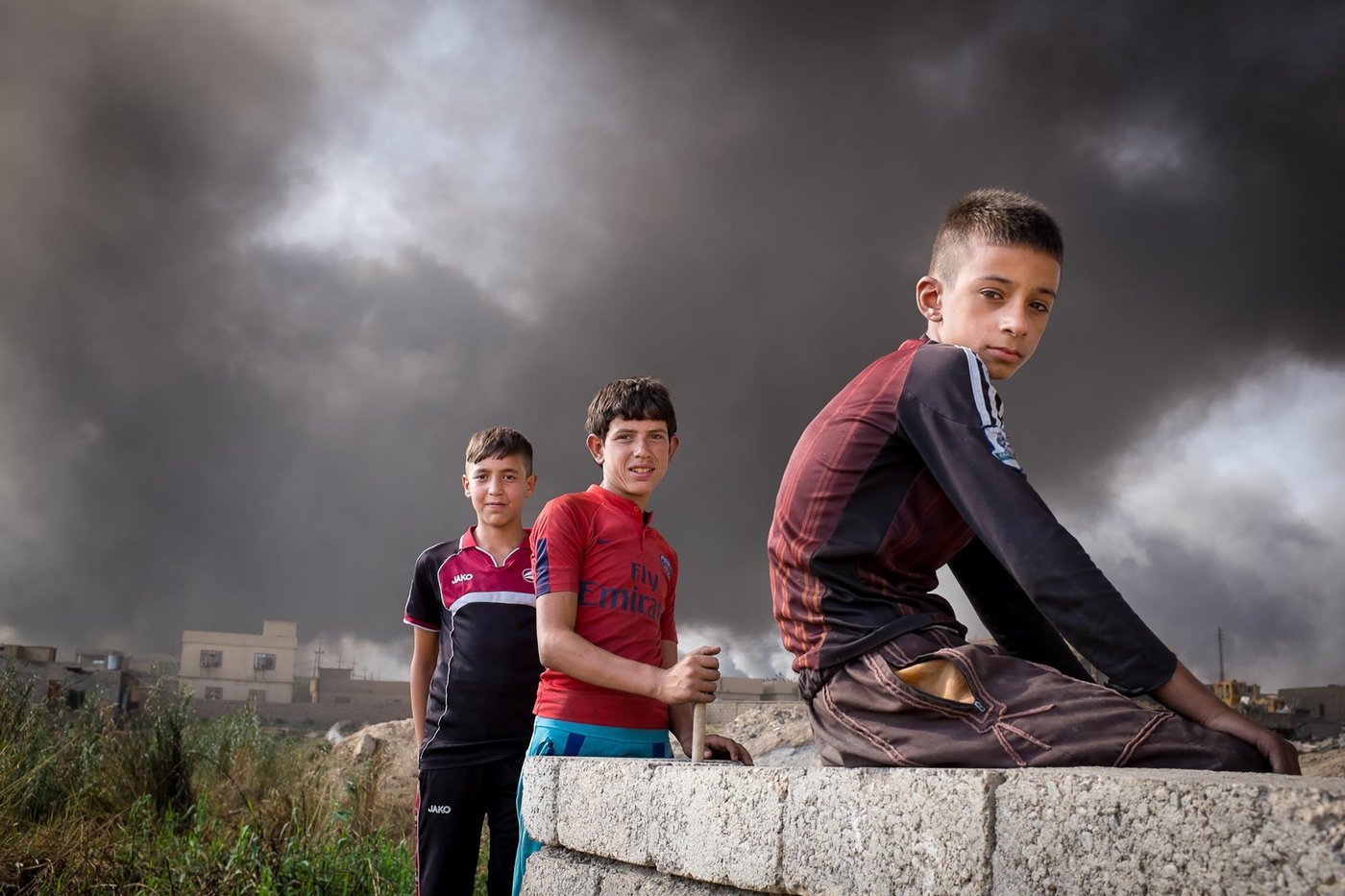The number of refugees increased by almost 900,000 people, bringing the number to 25.4 million in 2016. The number of people internally displaced decreased by just over 500,000 compared to 2015, to 40.3 million.
This is the fifth year in a row we see an increase in the overall number of displaced people, and the number continues to be historically high. A key factor in 2016, was an increase in the number of displaced people in many African countries. In the Democratic Republic of the Congo (DRC), 920,000 people were internally displaced in 2016 alone, and in the Sahel belt, the humanitarian crisis has gone from bad to worse.
Many of those newly displaced in 2016 originate in the Middle-East and most are Syrians. However, the overall number hasn't changed, because many Syrians are also returning. Elsewhere in Asia, the number of refugees is decreasing.
The funds provided by the international community are still not sufficient to cover the needs. Between 2007 and 2009, on average 72 per cent of the humanitarian pleas were met, but between 2014 and 2016, the share sank to an average of 59 per cent.
The top five countries on this years' list of forgotten displacement crises are all in Africa. Many of the African countries ravaged by conflict are among the poorest and most vulnerable in the world, and in many areas, drought has led to severe food shortages. The majority of African refugees flee to other African countries. Very few people from countries such as South Sudan, Burundi and DRC, from which many refugees originate, make it to Europe.
In Syria, Iraq and Yemen, the wars continue, and millions of refugees are trapped in the greatest humanitarian crises of our time. Today, the situation in Yemen is approaching catastrophic proportions, and the lack of political will to solve the conflict is striking. These conflicts are characterised by power struggle for regional influence and civilians suffering high levels of violence.
In 2016, Afghanistan had the largest number of returnees. According to The International Organization for Migration (IOM), 692,000 unregistered Afghan refugees returned from Pakistan and Iran, in addition to several hundred thousand registered Afghan refugees. The Afghan authorities estimated that the total number of returnees from these two countries was more than one million in 2016. Many have felt forced to return to a country with a steadily worsening security situation.
In February 2017, Kenya's high court ruled that it would be unconstitutional to close down the Dadaab refugee camp. Kenya has hosted a large number of Somali refugees for several decades. Over the last few years, the Kenyan government has become increasingly vocal about their wish to close Dadaab and return the Somali refugees home. With drought and hunger threatening people in Somalia, forced return to a country in conflict is not a solution to a refugee crisis, and the risk is high that those who return end up as internally displaced instead.
The asylum countries with the highest number of new recorded refugees are in Europe and Africa. Most of the new refugees originating in the Middle-East ended up in Europe in 2016, more specifically in Turkey, Germany and Sweden.
The flow of refugees from Turkey to Greece has almost halted following the EU-Turkey deal.
Border controls hindering transit make it difficult to get to countries further north in Europe. As a result, Greece and Italy are left with the responsibility for migrants and refugees who have crossed into Europe by sea. The EU relocation plan has been met with much opposition, especially in eastern Europe, and European states have been reluctant to take on their share of the responsibilities. The goal of relocating 160,000 people by September 2017 might end up being reduced to 30,000.
The flow of refugees and migrants from Libya to Italy has increased, but most come from countries whose citizens traditionally are not granted asylum. European leaders have made deals with a number of transit countries in Africa to keep migrants and refugees from reaching European shores. However, the accumulation of migrants and refugees in Libya is not a solution to the problem. The UN has declared Libya the worst country for children refugees, and documented comprehensive assaults against women and children.
Many of the great humanitarian crises of the world take place in countries embroiled in long-term conflict, such as DRC, Somalia and Afghanistan. We need to push for a solution to these conflicts, as well as keep more conflicts from becoming protracted. The conflicts in Central African Republic, Nigeria and Yemen, for example are on the brink of becoming defined as long-term. We know that long-term conflict leads to "donor fatigue" and less media coverage.
One of the most positive stories of 2016, is the peace agreement between the Colombian government and the FARC guerrilla. The deal was a historic breakthrough in a conflict that has lasted more than 50 years, killed 260,000 people, and forced more than seven million to flee their homes.
Over the past few years, focus has shifted towards creating a sustainable, humanitarian response, looking to integrate emergency relief, reconstruction and development. Nevertheless, the divide between humanitarian work and development work is still too large. If humanitarian aid is to do more than save lives, and also contribute to lowering the risk of new conflict, closer collaboration between humanitarian and development organisations is essential.
It is important, especially in many of the most vulnerable African states, that the "grey areas" that erode responsibility and hamper the development of holistic strategies are erased. In addition to this, it is important to ensure that humanitarian aid reaches everyone entitled to such help, regardless of political agendas.


